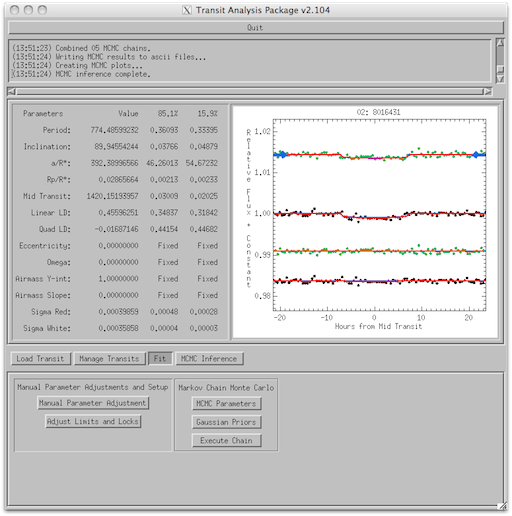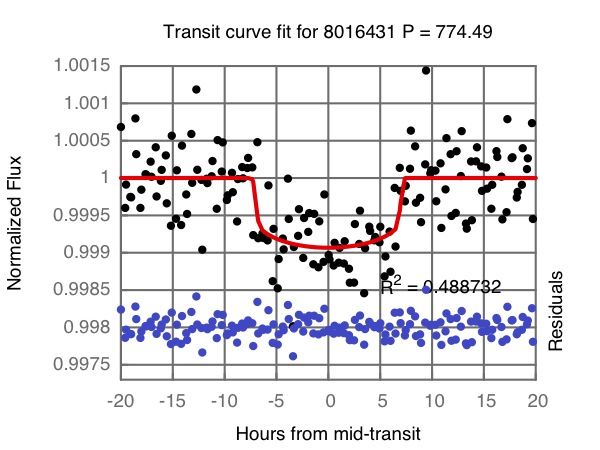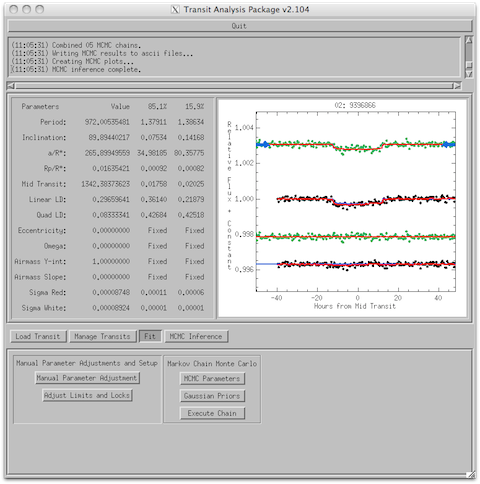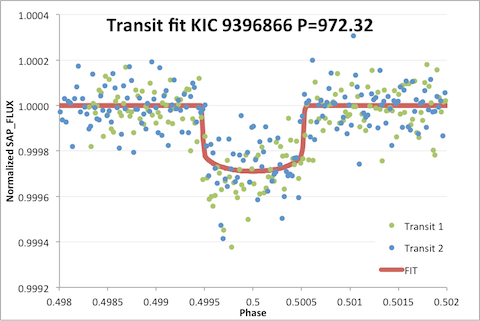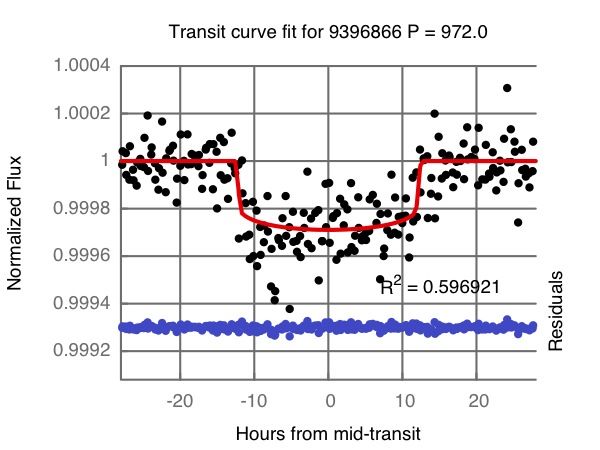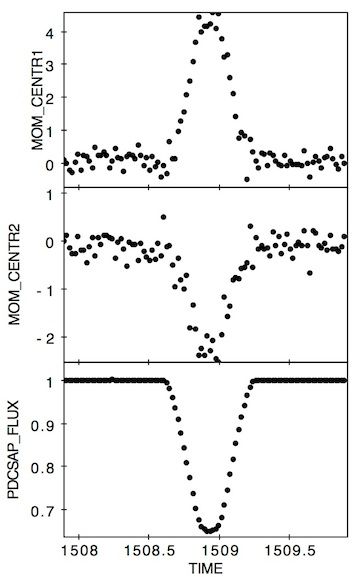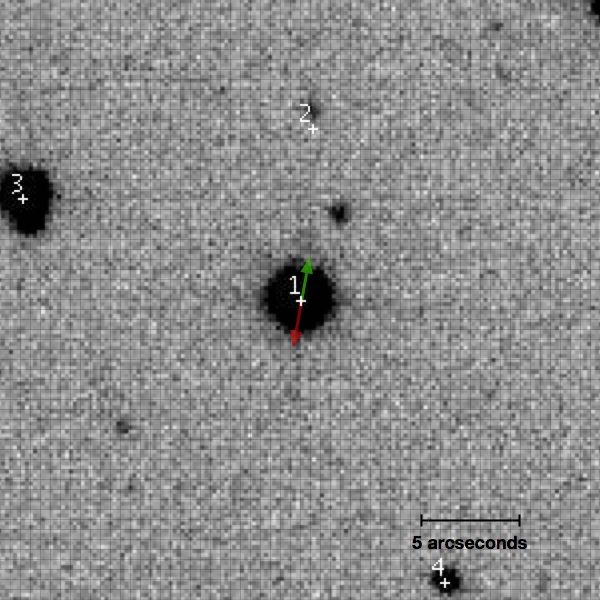Planet Hunters forum Talk member Tesh90 flagged this possible unlisted planet candidate transit in the Kepler Q7 light curve. A second transit was identified near BJD 1420.2 along with transit analysis by Hans Martin (Zoo3hans).
Comments by Planet Hunters forum Talk member Kian Jek:
Here is the TAP run:
The transit curve fit:
The transit depth is 933 ppm with a duration of 15.07 hr. In order to make the orbital parameters consistent with the stellar data at MAST, I find that I get a better fit if the stellar radius is adjusted up to 0.89x Sol instead of 0.621, and the stellar mass set to 0.95x Sol. This is more reasonable for a 5671K Teff, and makes this closer to a Sol-like star.
If so, then we get a 2.79x (+/- 0.21) RE planet, orbiting at 1.624 (+/- 0.21) AU from the primary. The Teq is approx. 184K.
You can follow the thread on this planet at Planet Hunters forum Talk thread here.

